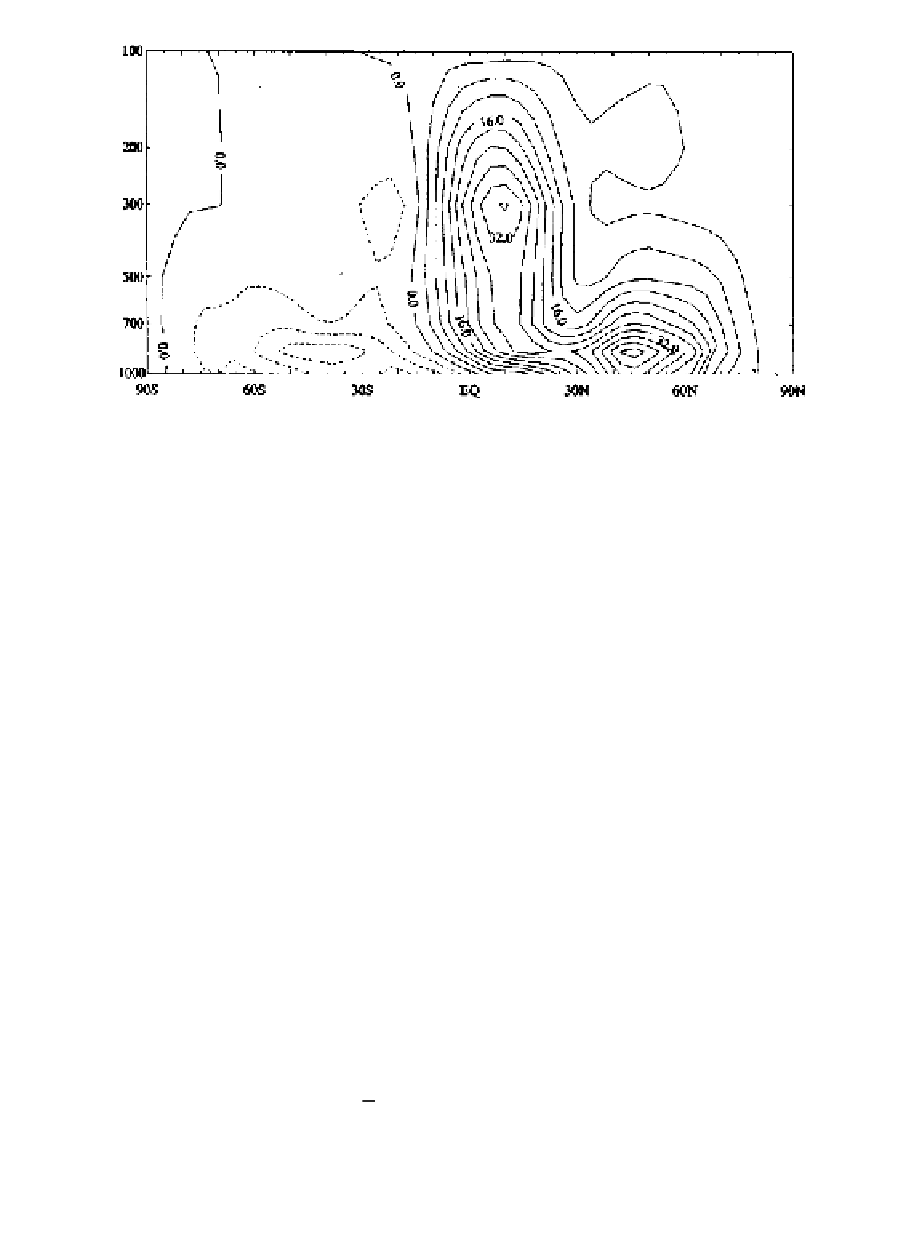Geography Reference
In-Depth Information
Residual mean meridional stream function (units: 10
2
kg m
−
1
s
−
1
) for Northern
Fig. 10.9
Hemisphere winter, based on the data of Schubert et al. (1990).
The magnitudes of the diabatic and EP flux contributions to the source term on the
right in (10.21) are generally larger in the winter hemisphere than in the summer
hemisphere. In the Northern Hemisphere troposphere the source terms are gen-
erally negative, w
h
ereas in the Southern Hemisphere they are generally positive.
This implies that χ
∗
itself is positive in the Northern Hemisphere and negative in
the Southern Hemisphere so that the residual meridional circulation consists of a
single thermally direct overturning in each hemisphere, with the strongest cell in
the winter hemisphere as shown in Fig. 10.9.
Unlike the conventional Eulerian mean, the residual mean vertical motion for
time-averaged conditions is proportional to the rate of diabatic heating. It approx-
imately represents the
diabatic circulation
in the meridional plane, that is, the
circulation in which parcels that rise are diabatically heated and those that sink
are diabatically cooled in order that their potential temperatures adjust to the local
environment. The time-averaged residual mean meridional circulation thus approx-
imates the mean motion of air parcels, and hence, unlike the conventional Eulerian
mean, provides an approximation to the mean advective transport of trace sub-
stances.
10.2.3
The Zonal-Mean Potential Vorticity Equation
Further insight into the nature of the extratropical zonal-mean circulation can be
obtained by zonally averaging the quasi-geostrophic potential vorticity equation
(6.24) to obtain
∂
q
v
∂y
∂q
∂t
=−
(10.22)

